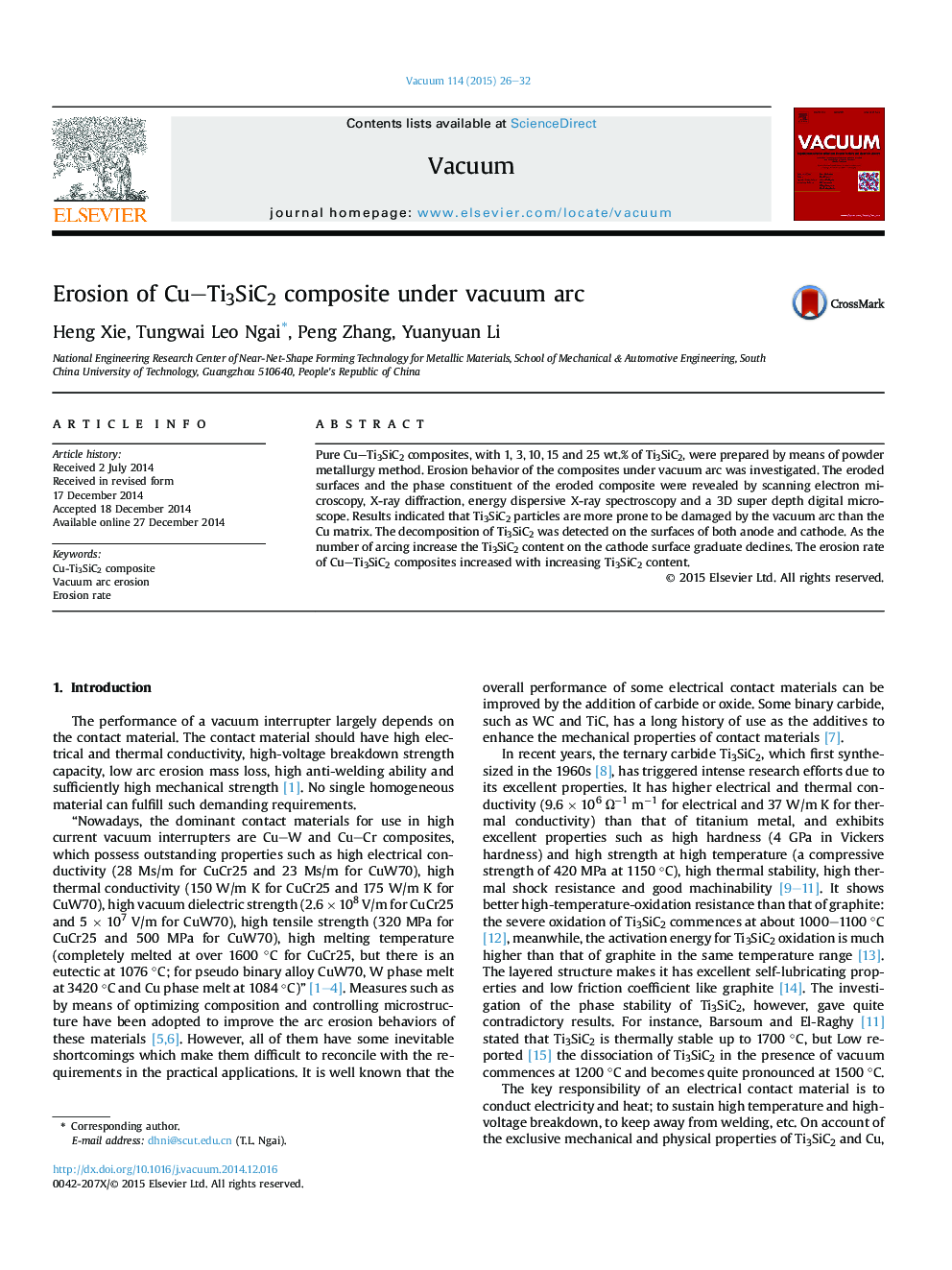| Article ID | Journal | Published Year | Pages | File Type |
|---|---|---|---|---|
| 1689756 | Vacuum | 2015 | 7 Pages |
•Erosion behavior of Cu–Ti3SiC2 composites under vacuum arc was investigated.•Ti3SiC2 particles are more prone to be damaged by the vacuum arc than the Cu matrix.•The decomposition of Ti3SiC2 was detected on the surfaces of both anode and cathode.•As the number of arcing increase the Ti3SiC2 content on the cathode surface graduate declines.•The erosion rate of Cu–Ti3SiC2 composites increased with increasing Ti3SiC2 content.
Pure Cu–Ti3SiC2 composites, with 1, 3, 10, 15 and 25 wt.% of Ti3SiC2, were prepared by means of powder metallurgy method. Erosion behavior of the composites under vacuum arc was investigated. The eroded surfaces and the phase constituent of the eroded composite were revealed by scanning electron microscopy, X-ray diffraction, energy dispersive X-ray spectroscopy and a 3D super depth digital microscope. Results indicated that Ti3SiC2 particles are more prone to be damaged by the vacuum arc than the Cu matrix. The decomposition of Ti3SiC2 was detected on the surfaces of both anode and cathode. As the number of arcing increase the Ti3SiC2 content on the cathode surface graduate declines. The erosion rate of Cu–Ti3SiC2 composites increased with increasing Ti3SiC2 content.
